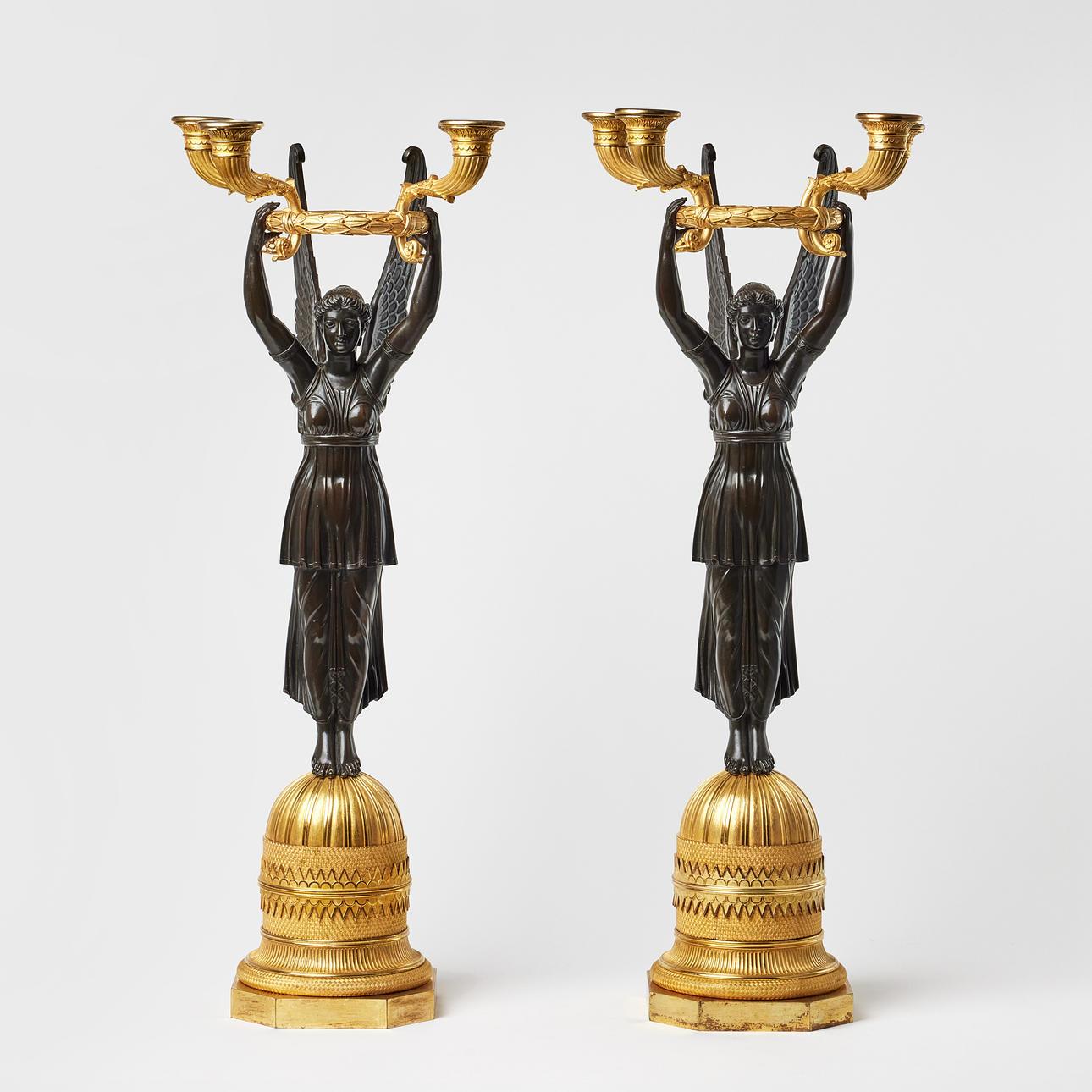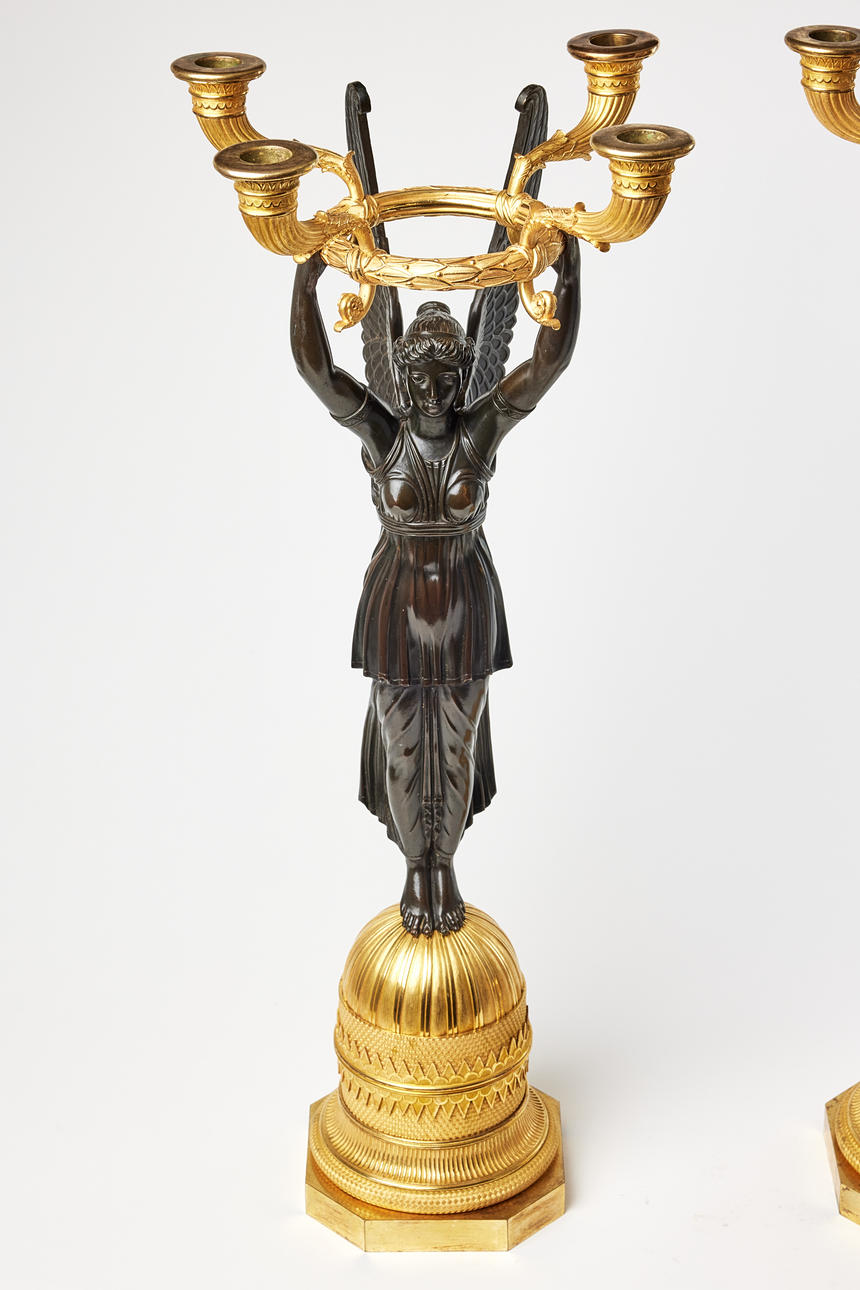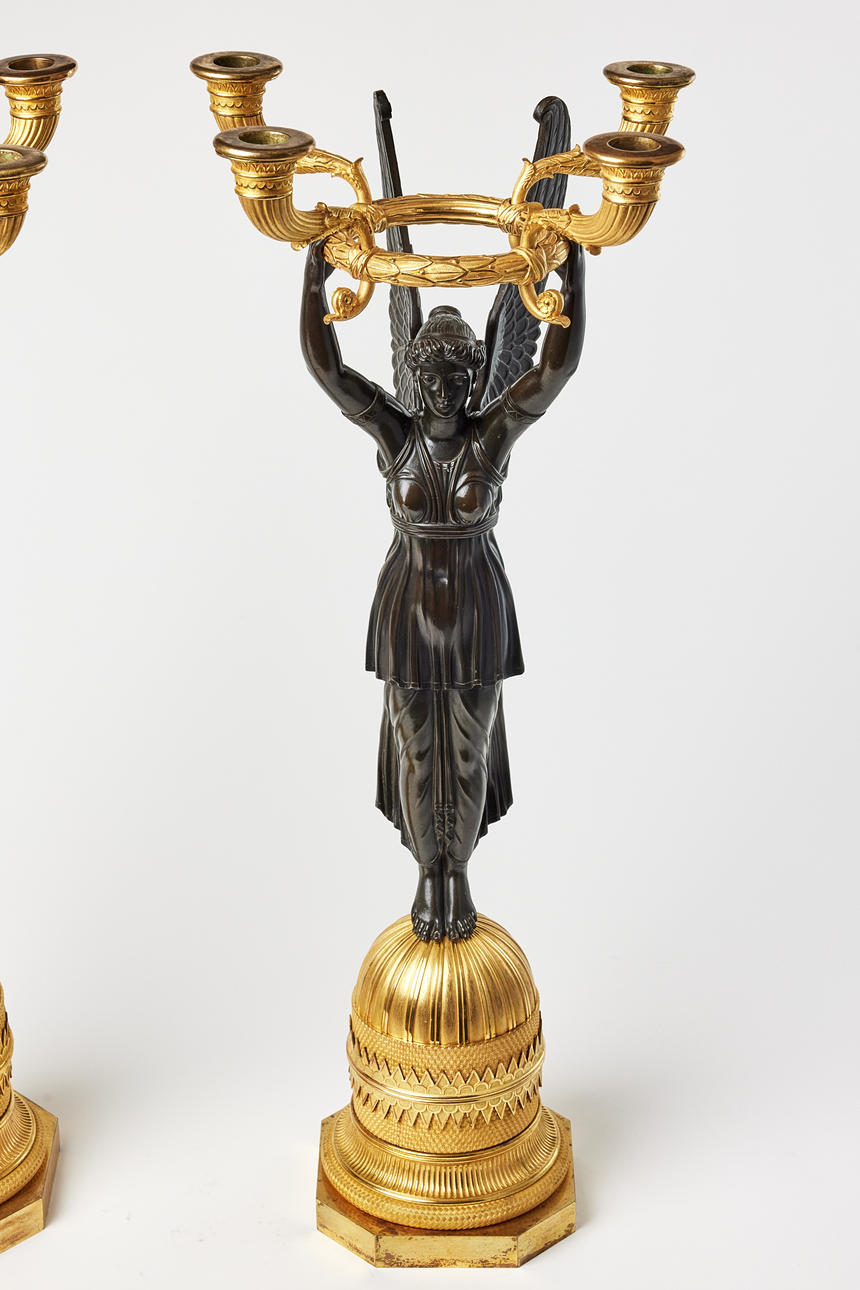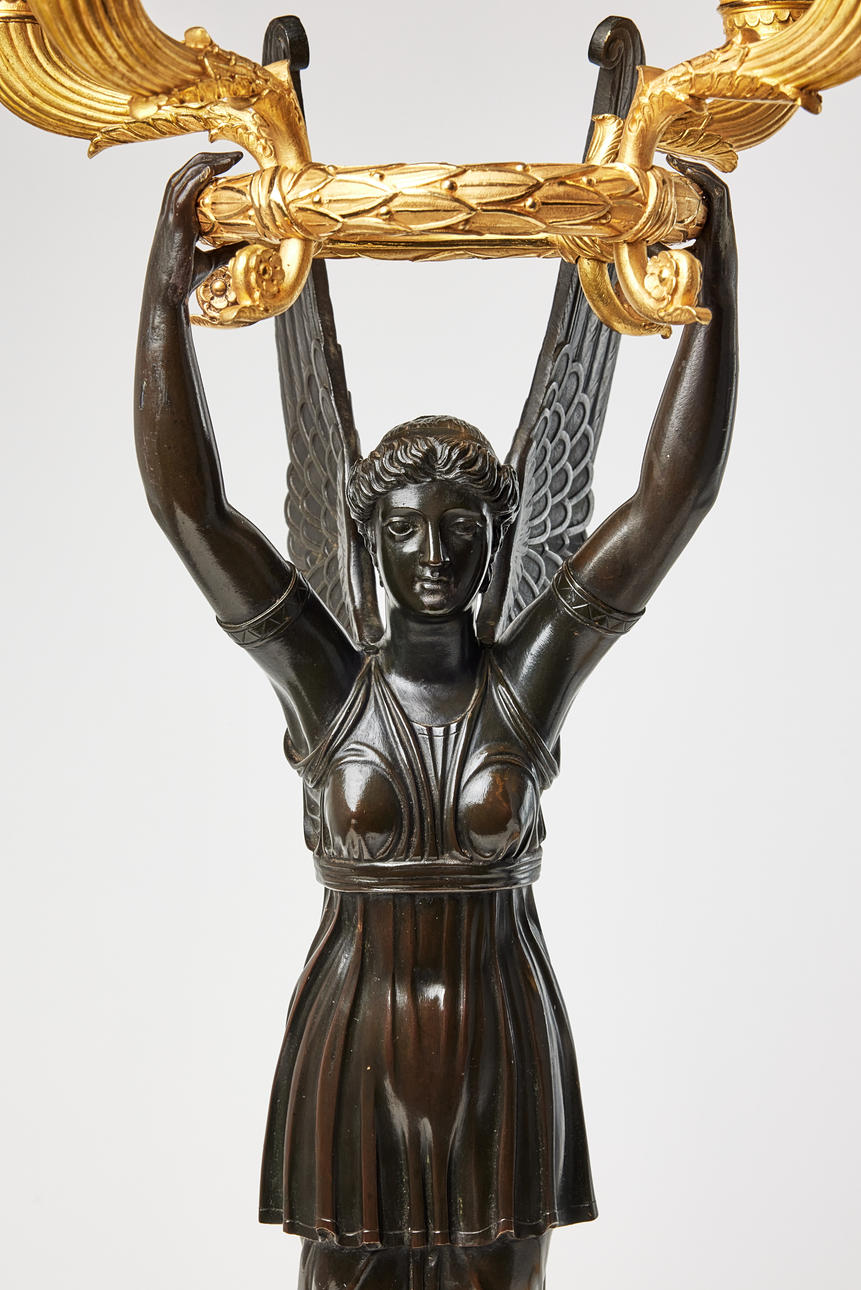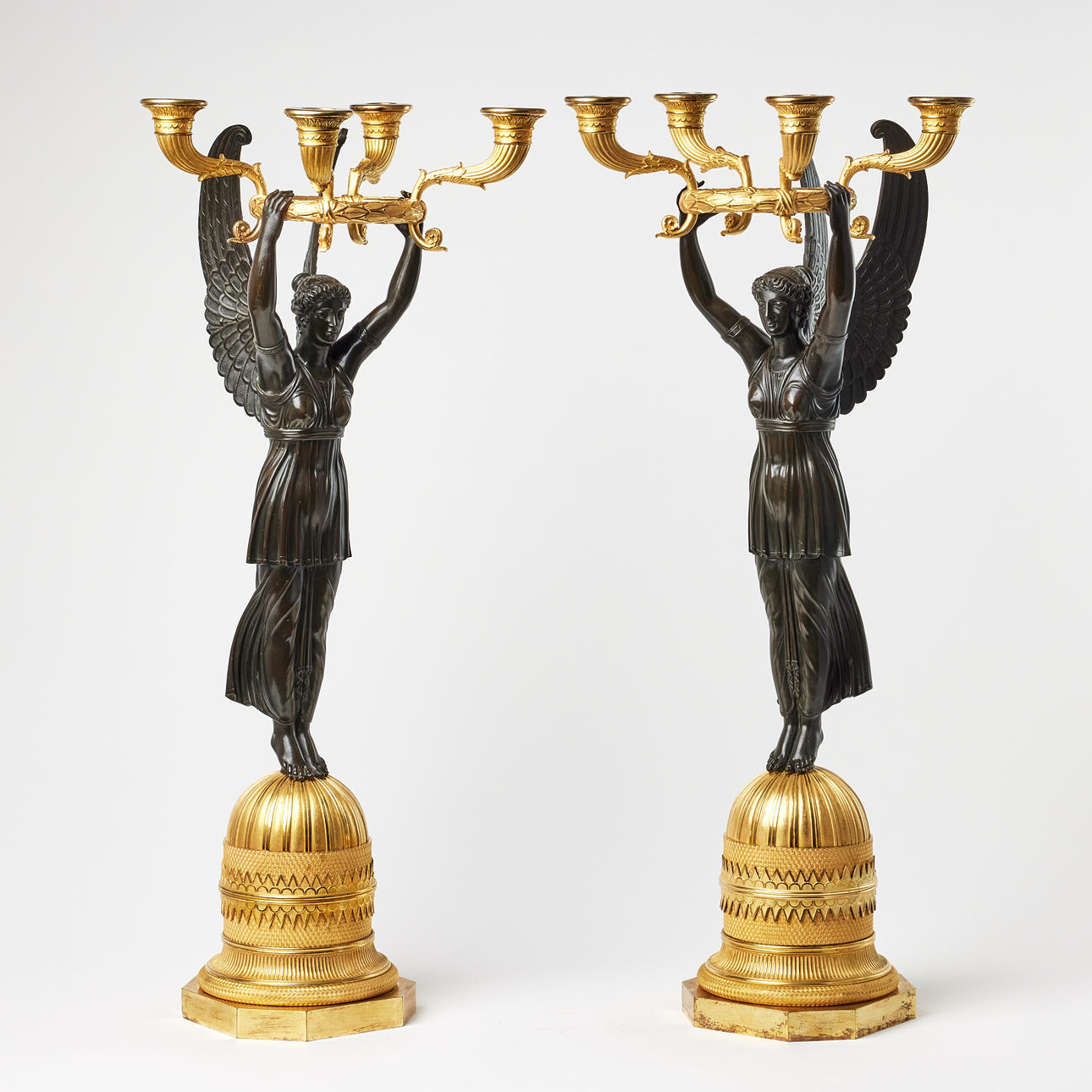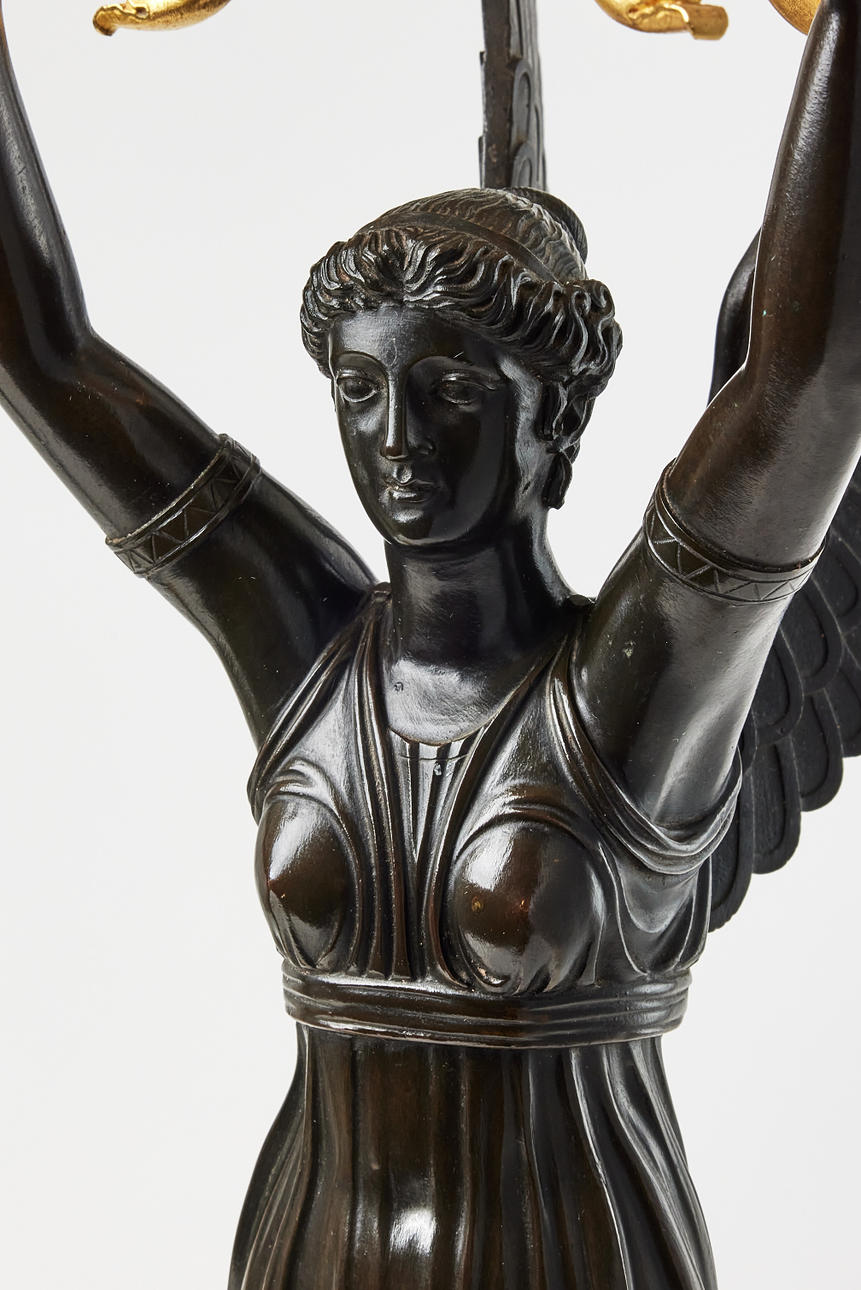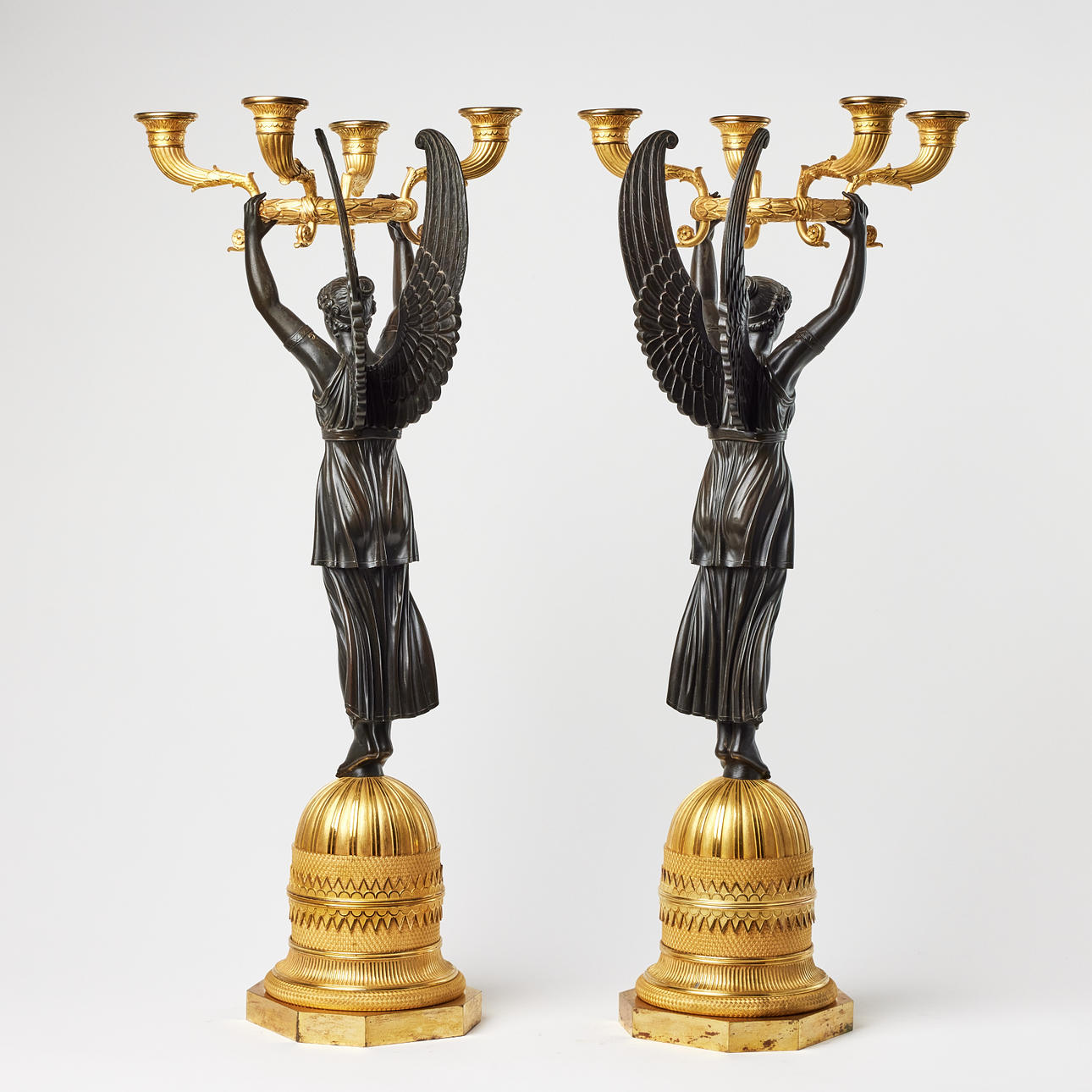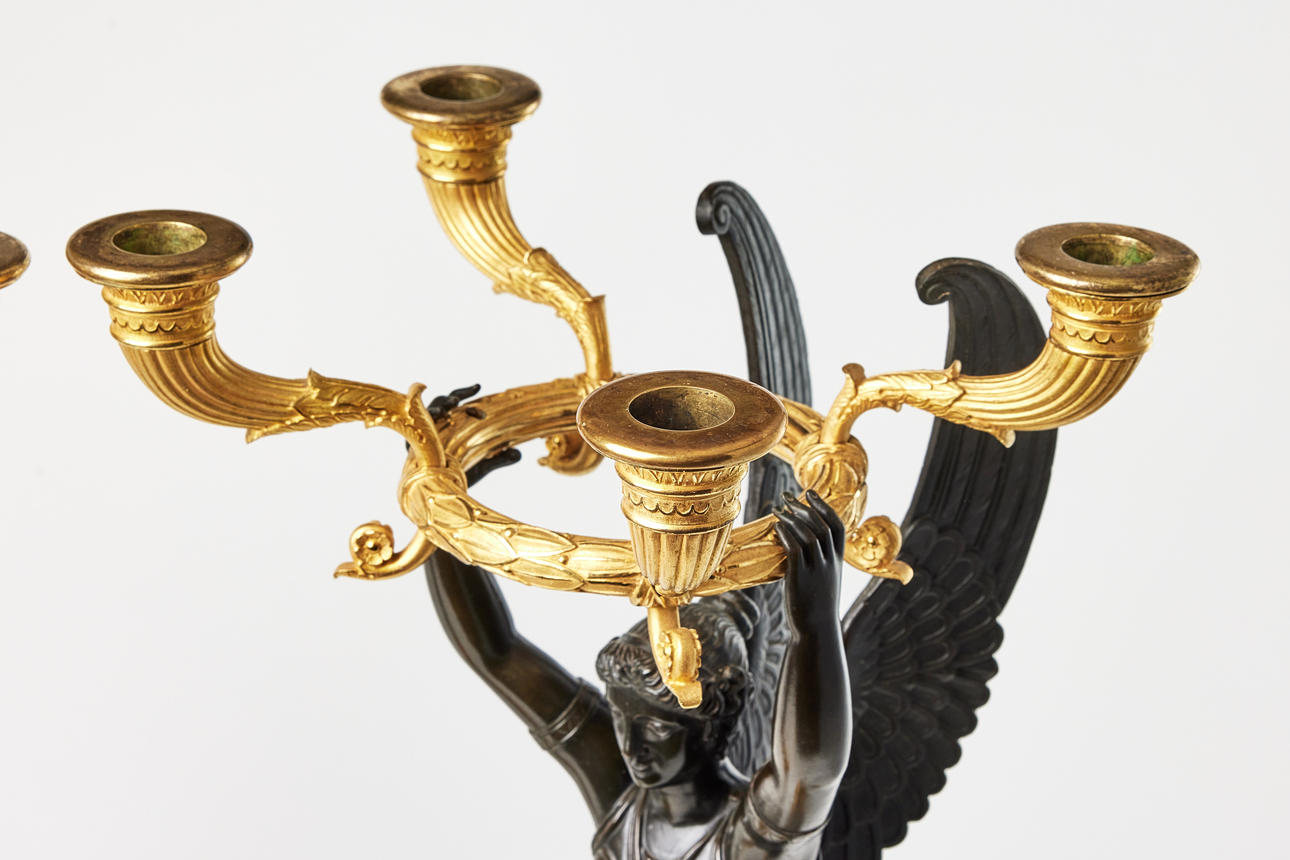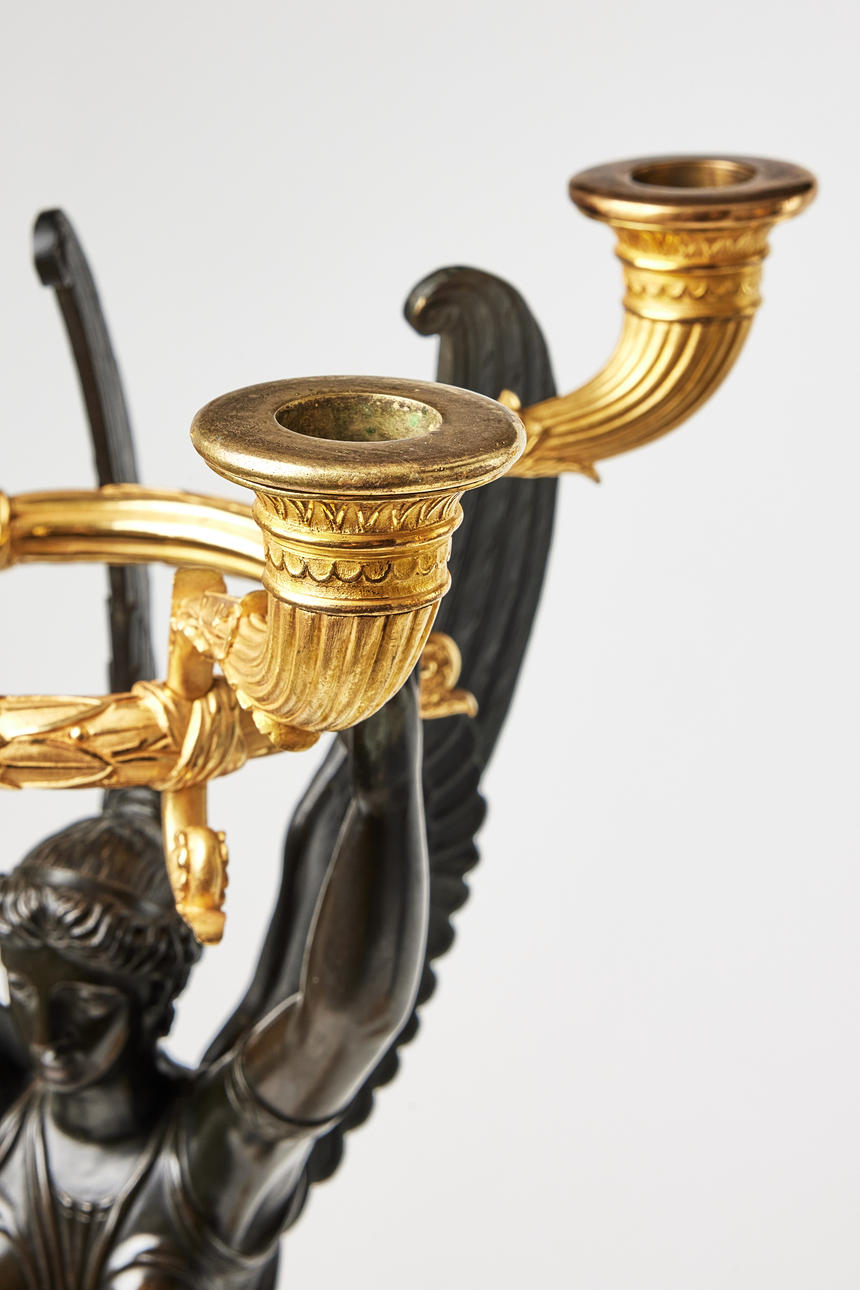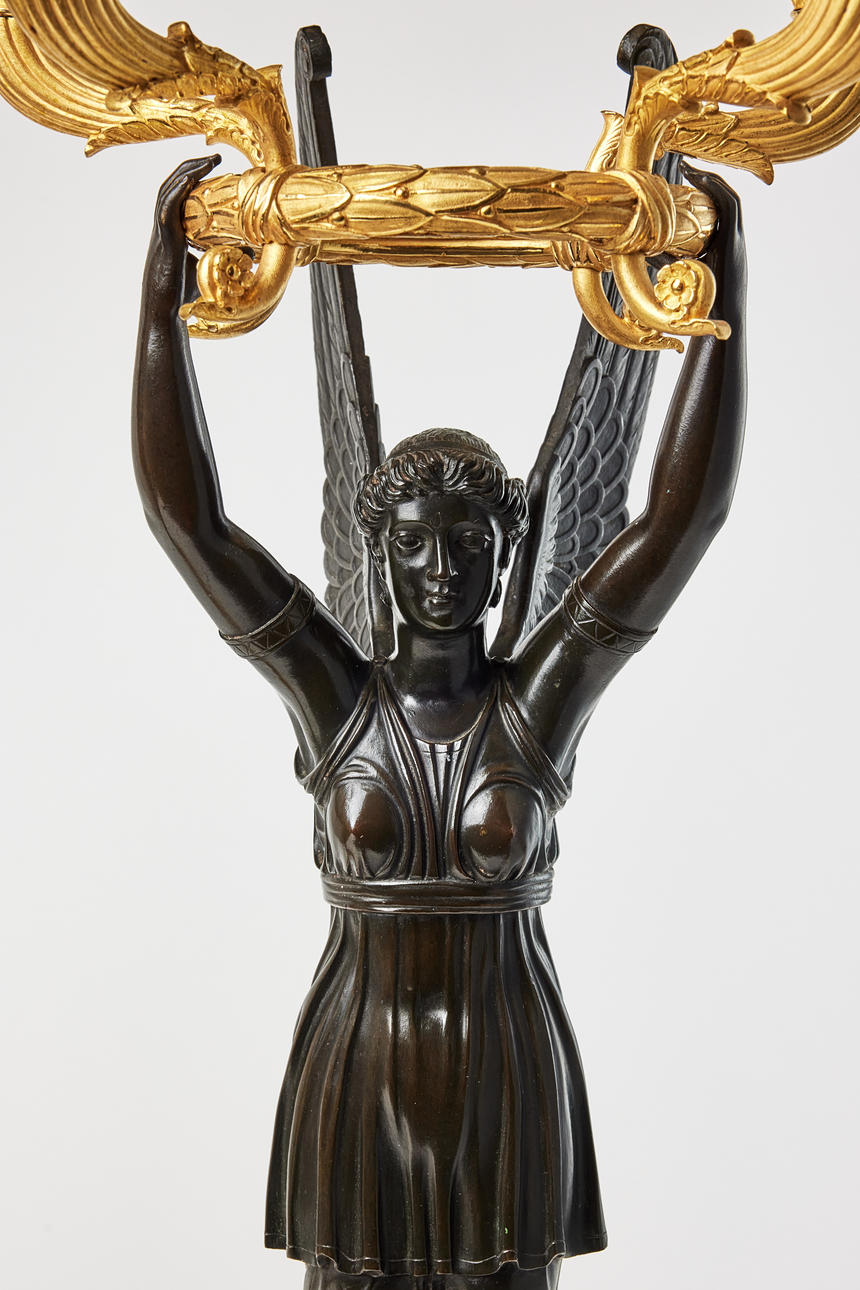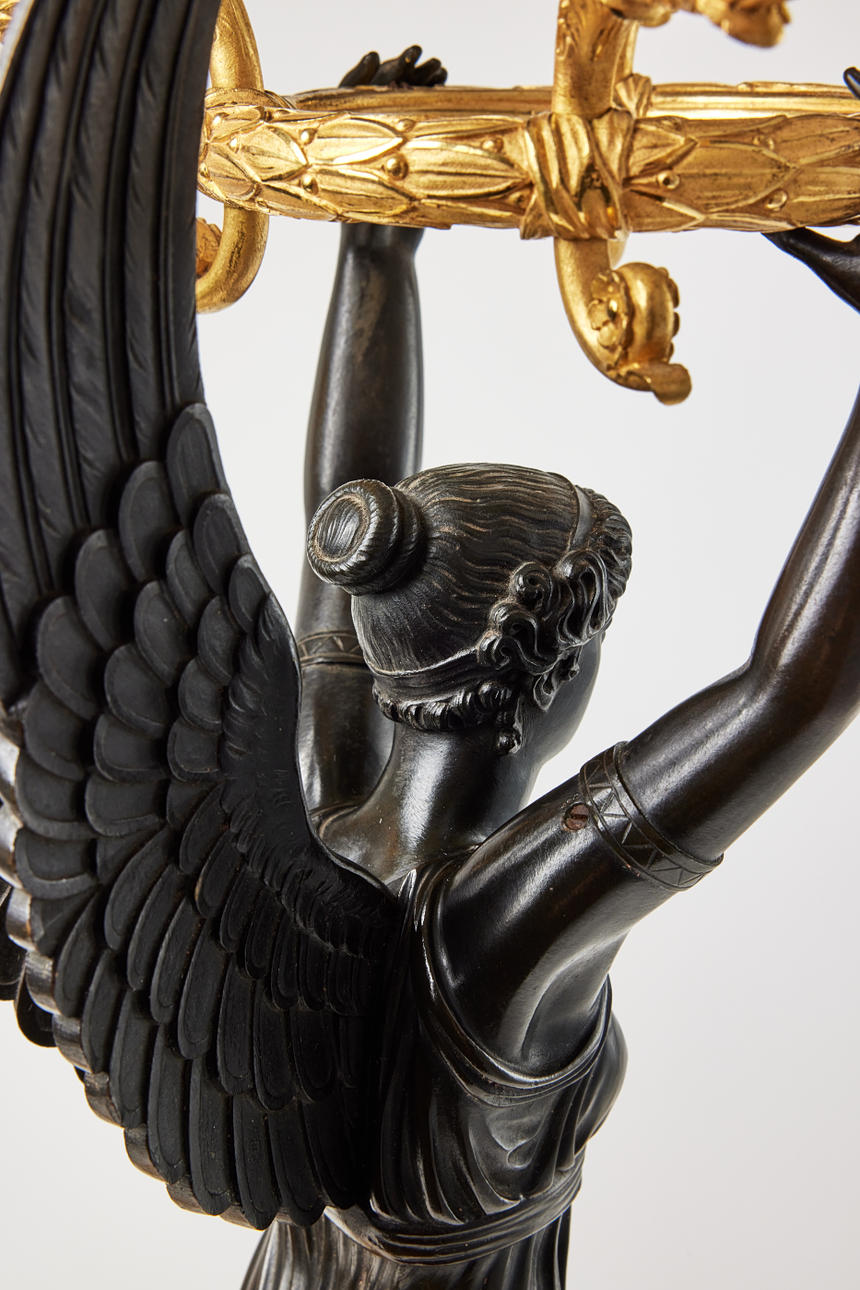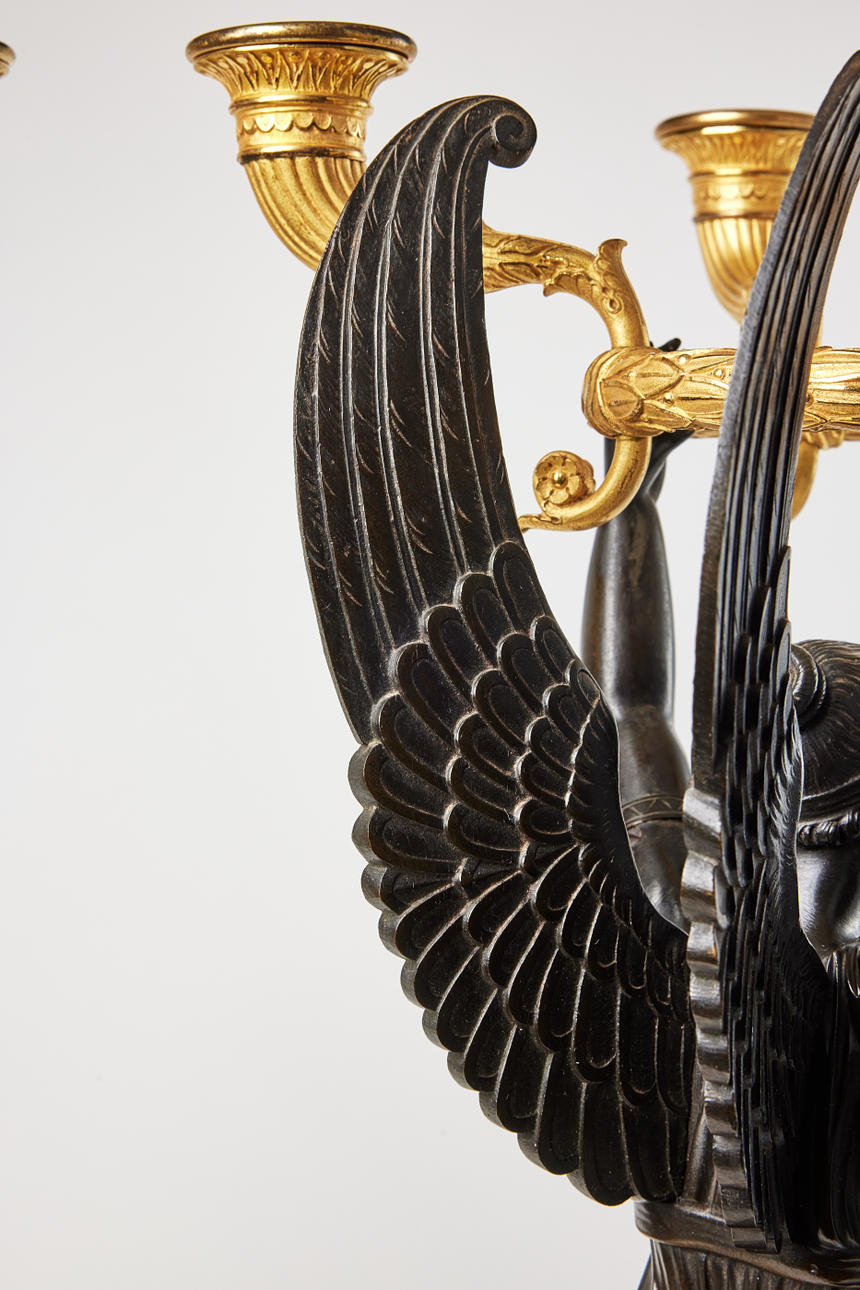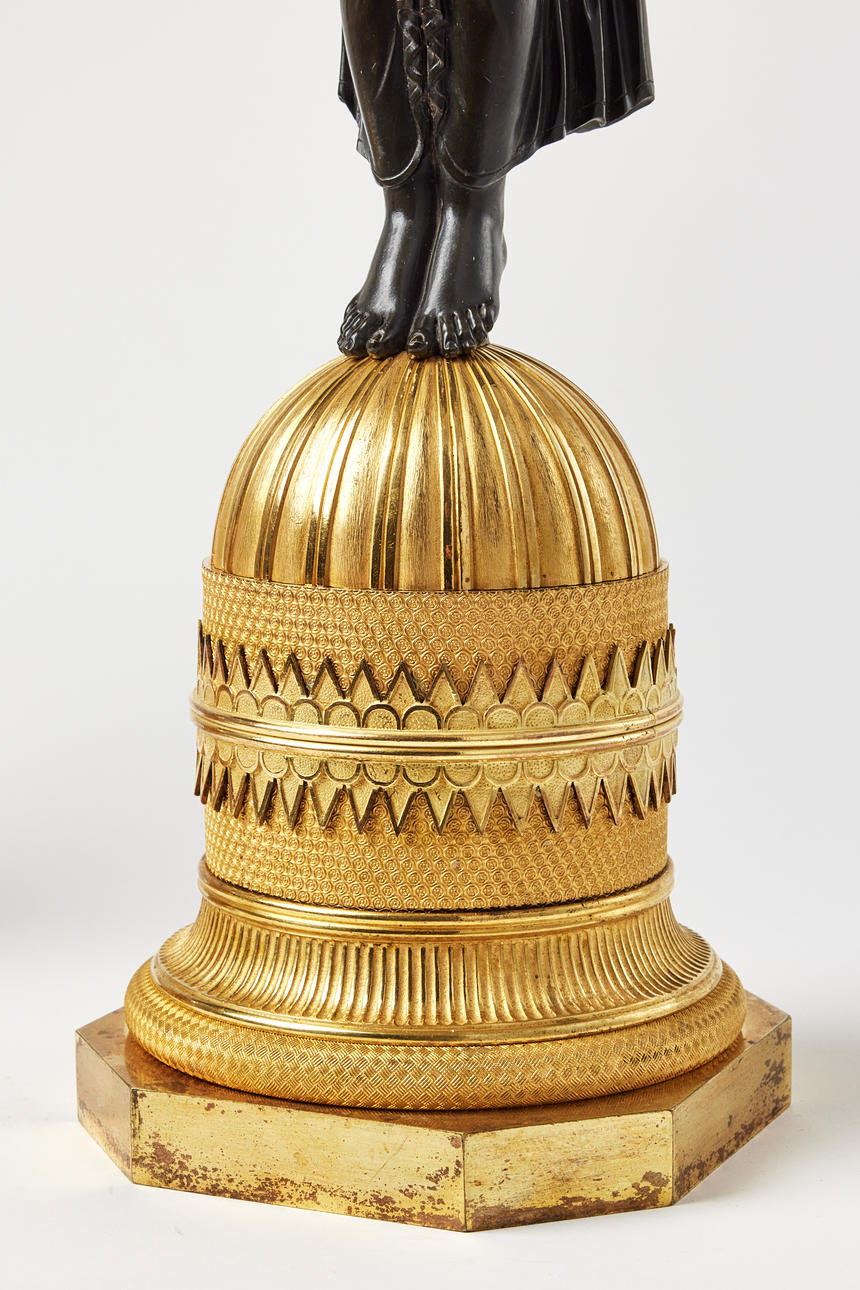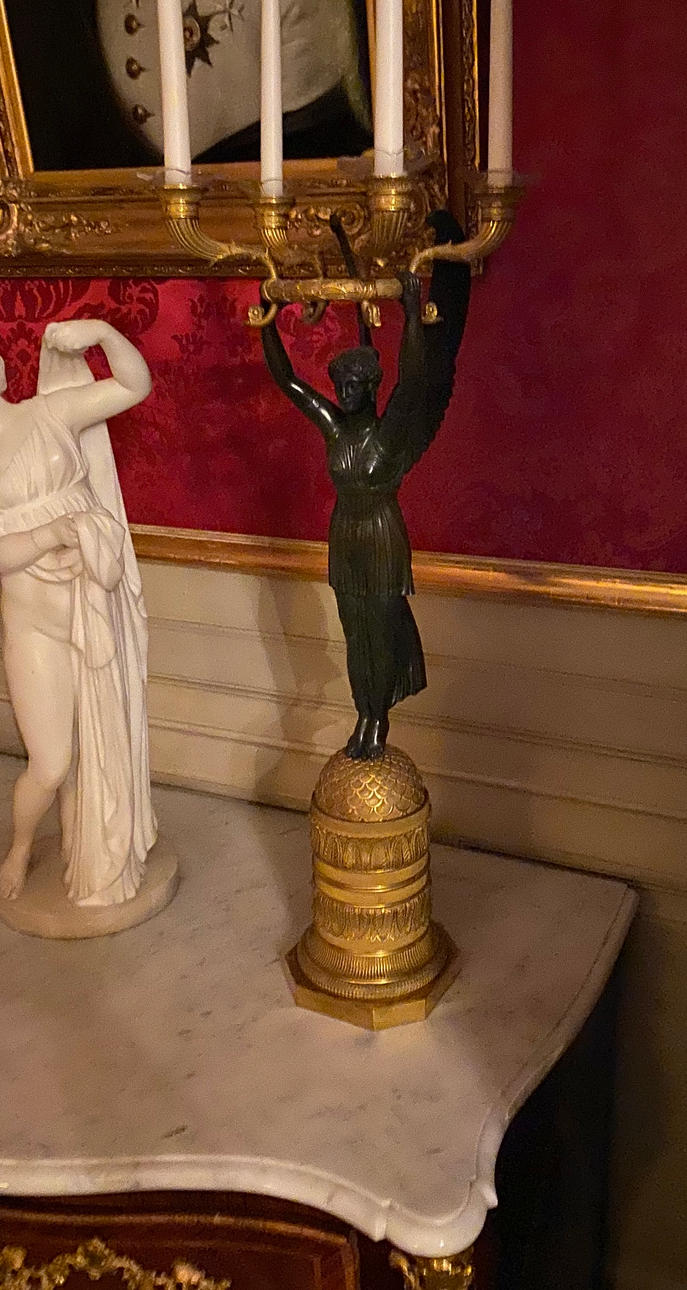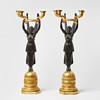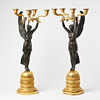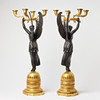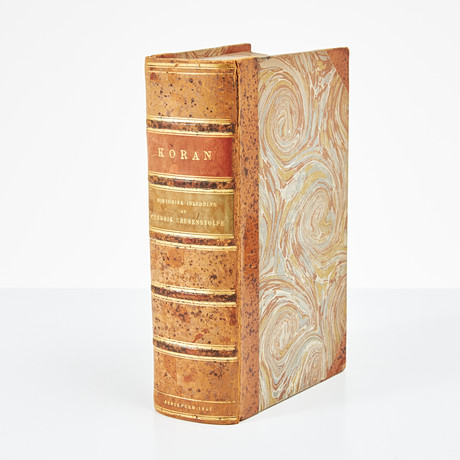
57. PIERRE-PHILIPPE THOMIRES WORKSHOP (sculptor and bronze foundry in Paris, 1751-1843) attributed, a pair of candelabras, high class Paris works in the empire, 1810s, for each four candles, frosted and polished burnt-gilt and dark-patinated bronze.
This auction is closed, but maybe you like the following items?

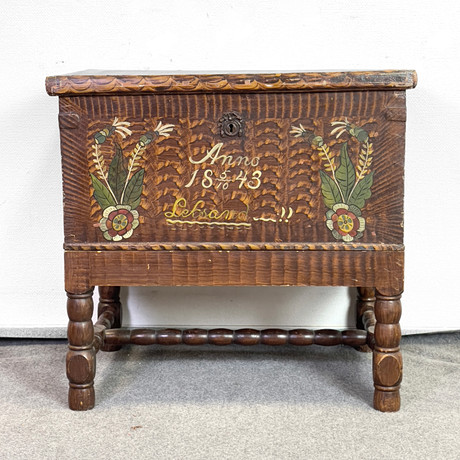

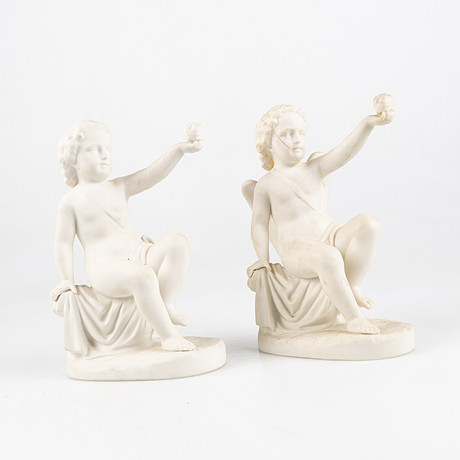
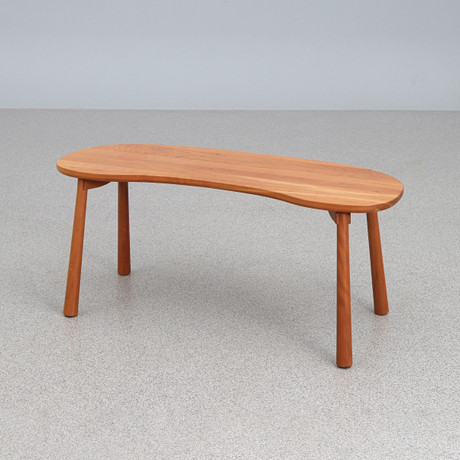
Description
Octagonal footplate, round postament with roulette decor, waist with ribbon of lace and bows, hemisphere crowned by the goddess of victory Viktoria, bearing laurel wreath with flared arms of light, plant ornamentation, loose cuffs, height 74 cm
Compare chandeliers in Stora bedkammaren, Guest floor, Stockholm Castle
LITERATURE: Hans Ottomeyer & Peter Pröschel: Vergoldete Bronzen, bands I-II, Munich 1986, page 328, fig. 5.2.1., compare Charles Percier's sketches to Josephine Bonaparte's boudoir in the Château de Saint-Cloud
August Hahr: The Swedish royal pleasure castles, Stockholm 1899, page 154, compare the candelabras in Queen Josefina's gallery, Drottningholm Palace
French magnificent bronzes have an almost 200-year-old tradition in the Swedish royal table through French-born Charles XIV Johan, who during his reign undertook a comprehensive update of the table set, in the form of exclusive table sets, etagères, candelabras, plateaus and table decorations. King Charles XIV Johan facilitated the export of Swedish porphyry from the Älvdalen valley through the counter purchase of bronzes, glass, porcelain and damask from Paris. Imports of burnt-gilt bronzes were extensive, and in 1824 the Swedish ambassador in Paris, Gustaf Löwenhielm, was instructed to restrict the importation of bronzes as the king's storehouses were filled to the brim. A variant of the auction's candelabra can be found in the Stora bedkammaren, the Guest Floor, Stockholm Castle (see last picture), but also elsewhere in the royal collections.
The most famous and successful of the Paris masters was Pierre-Phillipe Thomire, whose workshop supplied large quantities of burnt-gilt bronzes of the highest order to Emperor Napoleon Bonaparte, Tsar Alexander I and King Charles XIV John. During the epoch, the French Empire blossomed and Thomire's never-ending idiom became a model for his professional brothers Feuchère, Galle and Ravrio, as well as for domestic manufacturing in the great European cities.
The model is based on the figure of the Roman goddess of victory Viktoria Romana, a sculpture from the 2nd century AD, found in the Italian town of Fossombrone. In 1777, the figure was bought by Landgrave Freidrich II of Hesse and in 1804 it was seized by the French army and ended up in the Louvre. In Paris, Viktoria Romana came to be one of the most important role models for designers during the Empire, the motif gained popularity through the designs of Emperor Napoleon's prominent designers Charles Percier (1764—1838) and Pierre François Léonard Fontaine (1762—1853). Nowadays, the so-called Viktoria of Fossombrone is included in the collections at Schloss Wilhelmshöhe outside Kassel, Germany.
Condition
Footplates and cuffs with partial wear, one cuff completed.
Sale
Do you have something similar to sell? Get your items valued free of charge!
Bidding
Hammer auction
Have your item valued free of charge.
Bid history
| The reserve price has not been met. | ||
| 4 | 22 May, 08:14 | 3 940 EUR |
| 4 | 22 May, 08:14 | 3 760 EUR |
| 4 | 22 May, 08:14 | 3 580 EUR |
| Show all 7 bids | ||
Description
Octagonal footplate, round postament with roulette decor, waist with ribbon of lace and bows, hemisphere crowned by the goddess of victory Viktoria, bearing laurel wreath with flared arms of light, plant ornamentation, loose cuffs, height 74 cm
Compare chandeliers in Stora bedkammaren, Guest floor, Stockholm Castle
LITERATURE: Hans Ottomeyer & Peter Pröschel: Vergoldete Bronzen, bands I-II, Munich 1986, page 328, fig. 5.2.1., compare Charles Percier's sketches to Josephine Bonaparte's boudoir in the Château de Saint-Cloud
August Hahr: The Swedish royal pleasure castles, Stockholm 1899, page 154, compare the candelabras in Queen Josefina's gallery, Drottningholm Palace
French magnificent bronzes have an almost 200-year-old tradition in the Swedish royal table through French-born Charles XIV Johan, who during his reign undertook a comprehensive update of the table set, in the form of exclusive table sets, etagères, candelabras, plateaus and table decorations. King Charles XIV Johan facilitated the export of Swedish porphyry from the Älvdalen valley through the counter purchase of bronzes, glass, porcelain and damask from Paris. Imports of burnt-gilt bronzes were extensive, and in 1824 the Swedish ambassador in Paris, Gustaf Löwenhielm, was instructed to restrict the importation of bronzes as the king's storehouses were filled to the brim. A variant of the auction's candelabra can be found in the Stora bedkammaren, the Guest Floor, Stockholm Castle (see last picture), but also elsewhere in the royal collections.
The most famous and successful of the Paris masters was Pierre-Phillipe Thomire, whose workshop supplied large quantities of burnt-gilt bronzes of the highest order to Emperor Napoleon Bonaparte, Tsar Alexander I and King Charles XIV John. During the epoch, the French Empire blossomed and Thomire's never-ending idiom became a model for his professional brothers Feuchère, Galle and Ravrio, as well as for domestic manufacturing in the great European cities.
The model is based on the figure of the Roman goddess of victory Viktoria Romana, a sculpture from the 2nd century AD, found in the Italian town of Fossombrone. In 1777, the figure was bought by Landgrave Freidrich II of Hesse and in 1804 it was seized by the French army and ended up in the Louvre. In Paris, Viktoria Romana came to be one of the most important role models for designers during the Empire, the motif gained popularity through the designs of Emperor Napoleon's prominent designers Charles Percier (1764—1838) and Pierre François Léonard Fontaine (1762—1853). Nowadays, the so-called Viktoria of Fossombrone is included in the collections at Schloss Wilhelmshöhe outside Kassel, Germany.
Condition
Footplates and cuffs with partial wear, one cuff completed.
Sale
Do you have something similar to sell? Get your items valued free of charge!
Details
- Catalogue no
- 57
The Exclusive Collection
Welcome to Stockholms Auktionsverk's The Exclusive Collection – a celebration of the most magnificent expressions of art and craftsmanship. This year’s catalogue is a masterpiece in itself, featuring exquisite objects that span centuries of artistic brilliance, with each piece carrying a unique story and an air of timeless elegance.
Among the auction’s most outstanding highlights is an exceptional work by the Spanish Baroque master Jusepe de Ribera – a dramatic and powerful composition showcasing his signature play of light and shadow and intense realism. This is a rare opportunity for collectors and connoisseurs to acquire an original work by one of the 17th century’s most significant artists.
The Swedish animal and nature painter Bruno Liljefors is represented by an impressive collection – an entire artistic universe where foxes prowl through snowy landscapes and birds are captured mid-flight. Liljefors' ability to combine scientific precision with poetic visual language makes his art a timeless source of fascination.
In the same spirit of artistic excellence, an original work by Marc Chagall is also featured – a vibrant and dreamlike piece where color and form harmonize with fairytale-like imagery and the symbolism of love. This work not only celebrates Chagall’s visionary artistry, but is also part of modern art history.
Among the highlights of the decorative arts is a magnificent chest of drawers signed by royal cabinetmaker Lorentz Nordin – a masterpiece of marquetry with beautiful elements and exquisite bronze details. It is accompanied by a unique mirror with blue glass, a decorative and rare feature that offers a refined interplay of color, light, and reflection – both pieces exemplifying the height of sophisticated interior culture and craftsmanship. Also noteworthy are a pair of elegant chests of drawers once owned by the daughter of artist Carl Larsson, whose provenance adds further cultural and historical significance.
For those seeking exquisite craftsmanship beyond the canvas, the auction also features a refined selection of silverware. Together, these objects create a complete experience of beauty, history, and collector’s value – a true tribute to the exceptional.

